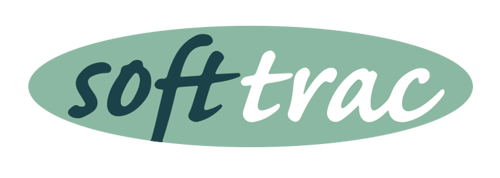 INTRODUCTION:
INTRODUCTION:
Even if you are completely up to speed with all the software that you use at your job, chances are at some point that will change. Technology is constantly evolving and you will likely need to learn new software that you have not used before at various points throughout your career.
Since learning new software and skills on a regular basis is now part of the norm, being able to do it efficiently and quickly is key to being successful especially when it comes to software. So, how do you do that? Is there a magic plan that brings you instantly up to speed with any software.
Unfortunately, there isn't. However, there are some things you can do when learning a new software that can improve your chances of success.
Below are ten things to do first when faced with learning a new software:
1. Understand Your Goals
Before diving into the software, be sure you understand what you hope to accomplish once you become proficient with the system. Are you going to be the primary user of the system? Do you just need access to reporting and some higher level functionality? Understanding your goals will help guide your learning as you begin to use the software.
2. Familiarize Yourself with Related Manual Processes
Often when moving to a new software, you are looking to automate and improve upon existing workflows. Having a good understanding of those manual processes before moving into the software will help you more easily identify and expand on your goals as well as identify critical tasks in the software.
** TIP ** Keep in mind, just because something is done one way manually doesn't mean it will translate exactly the same in the software. The goal is to improve processes so changes and modifications in how things are done will ultimately be part of the process.
3. Identify Key Features
Get to know the primary features of the software. What does it do well? It was most likely selected for a specific purpose. Go through the software and review how to find and execute those key functions.
4. Get to Know the Menu Layout
If you walked into a room for the first time, you would become familiar with the layout. You'd find the light switch, make note of how the furniture is setup so you can walk around the space and take in the overall look and feel. The same is true with getting into the software for the first time. You want to get familiar with the menu structure and how things are laid out. This will help you as you maneuver through the software and give you a good idea of where to look for features and functionality.
5. Review Online Help
When learning a new software, you will get stuck on occasion. This is a normal part of the learning process. Knowing how to access online help will be useful for getting over these moments.
contextual adjective The definition of contextual is depending on the context, or surrounding words, phrases, and paragraphs, of the writing. ["contextual." YourDictionary, n.d. Web. 4 May 2017. <http://www.yourdictionary.com/contextual>.]
Many software programs now offer contextual help which brings you to the help screen specific to the area you are working in at the time of launch. This makes it even easier to find what you need. Use the help available to get a quick refresher of what to do as you begin working in the software. I still launch help even in software that I know well. Sometimes everyone needs a quick reminder.
If you have access to a recorded DEMO or orientation of the software, this is a great place to get a general high level overview of how the software works. It is a way to get familiar with the software and another nice starting point. There may even be shorter video how-tos and mini-trainings that focus on specific functionality or areas within the software that can provide you with some baseline information.
7. Run Through Tutorials
To get a little more in-depth with the software, go through any practice tutorials and learning exercises that are available. These can help guide you step by step through some typical scenarios and give you more of a sense of how to use the software effectively.
8. Find a Mentor
Is there someone at your organization who is already familiar with the software? If so, see if you can spend some time with them watching them as they are using the software. Job shadowing helps give you a sense of how the software is used specifically at your company. This mentor can also be a great go-to resource for questions and guidance.
If there is no one at your organization that you can go to, there are other ways to meet and get assistance from other users including:
- Message Boards
- Forums
- User Groups
- Knowledgebases
Each software may have different resources, but it's a good idea to learn which ones are available and to utilize them for assistance as you begin to learn the software.
9. Research Support & Training Options Available
Two additional components to incorporate into your learning agenda:
Training. Are there any formal training options available? Can you take a web based class or learning session. Is there a local training offered. Find out what training resources you have access to and determine which ones will help you be most effective with the software.
Support. Whether you are new to the software, or a long time users, at some point you might encounter an issue for which you need more in depth assistance. Learn what support options are offered for the software and utilize those resources as needed.
10. Step Away and Breath
This last step isn't specific to learning software. I think it has value for many of the tasks we perform each day. If you reach a wall, or are starting to get burnt out, step away for a bit and take a breath. Get up and walk around. Do something active. This will help recharge and refocus you for the next round of learning.
Are you trying to learn the Abila MIP Fund Accounting™ software? We've got you covered. Check out our free MIP Orientation Video to help jump start your learning.
CONCLUSION:
Everyone learns differently and no one knows your learning style better than you do so incorporating some of your own personal tips and tricks that you have found effective in the past is also important when learning a new software for the first time.
Soft Trac is a woman-owned business and accomplished team of nonprofit software consultants. We believe in making nonprofits "do good" better. For more information on any of the topics discussed in this blog or to learn more about the software products and services we offer, please visit our CONTACT page.
Copyright © 2017 Abila, Inc. All Rights Reserved. Abila MIP™, Abila MIP Fund Accounting™, and True Fund Accounting™ (Any other products they represent) are trademarks and registered trademarks of Abila, Inc. in the United States and other countries. All other product names mentioned herein are the trademarks of their respective owners.













